Slow city: A retrospection and showcase of a slow city through tram windows
Directed by: Sun Haofu
Inspiration and subject matter
“Does the tram run slowly?” “Yes.”
“Is it of greater necessity than the MTR and buses?” “Probably not.”
At the invitation of a friend, I sat on the tram for the first time after arriving in Hong Kong. As I gazed out the window at the passing automobiles, contemplations bubbled out impulsively. I eventually became perplexed by a fundamental question:
How did the tram system sustain itself in such a bustling city for over a century?
After devotion to research, I am thrilled to learn about the undeniable traits that secured its position through history, namely, space efficiency, sustainability, affordability, and heritage.
The tram’s thin and double-deck design greatly reduced its area coverage to provide 0.25 square meters of road space consumed by each tram passenger during peak periods (hktramways, 2023). Meanwhile, the curved-back chairs and the pivoted or suspended handle mounted above eye level further ensured the comfort of both sitting and standing passengers (Pu, 2021).
As the greenest mode of public transport in Hong Kong, the tram produces minimum pollution on the road. Its noise generated has been greatly decreased via thermit welding and rail welding technologies. Additionally, more resilient and energy-efficient LED lights were installed to reduce the tram’s carbon footprint (Chan, 2009).
With current prices of HK$3.00 for adults, HK$1.50 for children under 12, and HK$1.30 for seniors 65 and older, the tram offers affordability for passengers (Zarnikau, 2020). In contrast to other forms of public transportation in Hong Kong, the tram fare charged is uniform regardless of the distance traveled.
Notably, the trams themselves have become cultural icons, having made frequent appearances in Hong Kong movies. In the 1987 fantasy film Rouge, Anita Mui Yim-fong’s Fleur famously declares her love for the tram after returning from the dead to rejoin her beloved. In the 1990 crime thriller Days of Being Wild, the romantic moment between Maggie Cheung Man-yuk and Andy Lau Tak-wah’s characters inspired many visitors to include posing for pictures on trams on their bucket lists.
The Theme of the Film
The short film was subsequently produced from further insights into my research, featuring a retrospection and showcase of a slow city through tram windows. The theme of slowness was demonstrated in the film through multiple angles.
First, “slow” is expressed through its literal meaning, referring to the relative speed of the tram compared to other means of transportation. Second, “slow” had its symbolic meaning to represent the leisurely time spent on a tram ride and the corresponding carefree outlook on life. Third, “slow” is a word that can transcend time to signify the older Hong Kong in history. Over a century, the tram stood as a witness to Hong Kong’s development. While the buildings grew into skyscrapers, the tram also evolved into a two-deck design. Therefore, a ride via the tram is parallel to a ride through history, taking us back to a time that is both far and familiar. Fourth, “slow” denoted the pace of change that has occurred on the trams as compared to other expansions in the city. While the city underwent rapid growth, the tram’s evolution remained relatively static. This once again underscored the importance of space efficiency, sustainability, affordability, and heritage that made sure the tram is not reaching its final stop.
Method
Research method
Throughout the course of the investigation, methods of field research and literature review were adopted. To ensure the accuracy of the film’s depiction of the tram. I took the tram ride from Shek Tong Tsui to Causeway Bay and back to observe the exterior and interior structure, noise production, running speed, and types of passengers on the tram. I also paid attention to the arrangement of tram tracks and tram stops on the roads. Findings on the unique placement of tram stop inspired my metaphor of tramcars as “ships sailing between isolated island-like stops” in the film. To better understand the tram’s cultural and historical significance, literature reviews were conducted on the design, development, and mission of the trams. The Modernization of Tram Car Body and Compartment published by Hong Kong Tramways LTD is studied to better understand the ergonomic design of seats and handrails (hktramways, 2023). Michael W H Chan’s research on the revitalization and preservation of tram facilities is reviewed to understand the detailed history of the tram system (Chan, 2009). Moreover, my research also built on the paper by John Zacharias and Sian Meng on the contribution of the tramway to street vitality to conclude the importance of trams to the city (Zacharias, 2017). Other works of literature regarding the position of trams in Hong Kong history were also studied to ensure comprehensive research.
Production method (in chronological order)
Storyboard
Prior to filming the videos and editing the film, I first created a storyboard to capture my ideas of the essential scenes to include. Although latter production did not follow strictly to the story board, it helped me to visualize my ideas and critically assess them.
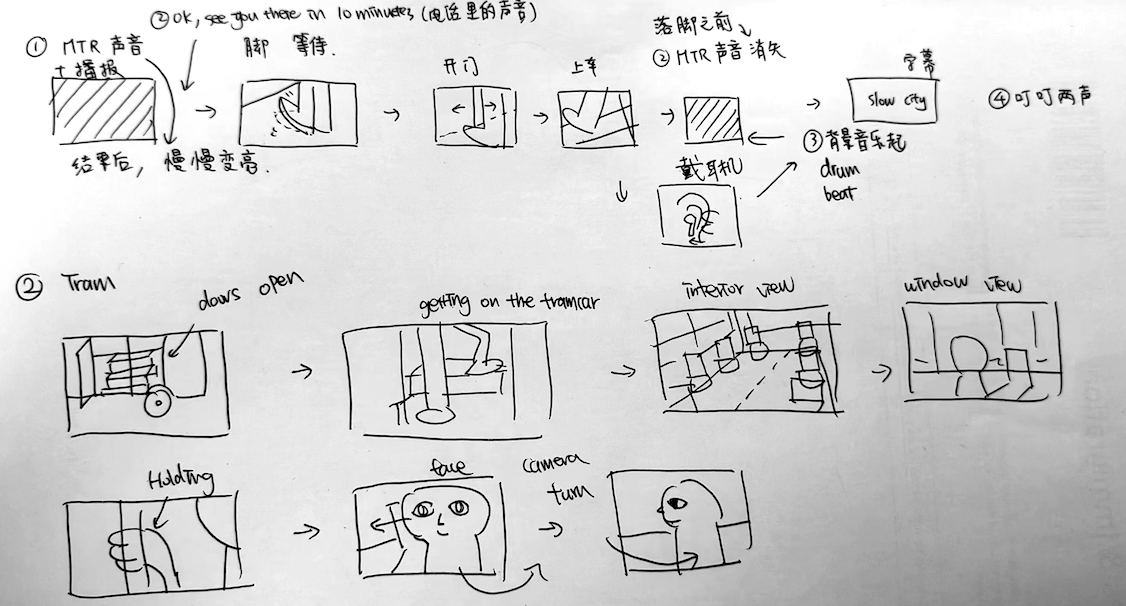
Figure 0. Storyboard draft
Shooting angles
To maximize the audience’s viewing experience of the film, I experimented with multiple camera angles. Eye-level shots were taken for interior scenes in the tram to mimic an immersive experience of taking the tram through a neutral perspective.
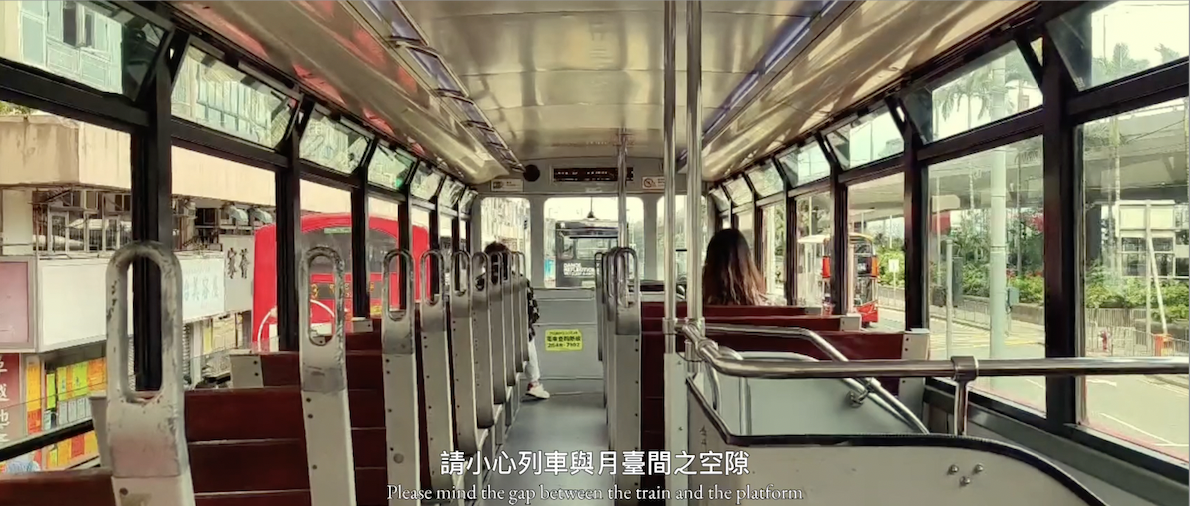
Figure 1. Eye-level shots of the tram’s interior
High-angle shots were taken above from the second deck of tramcars toward the tram track below to draw audiences’ attention toward the “Tram Lane” written on the road, mirroring the main topic of the film.

Figure 2. High-angle shots of the tram lane
Multiple ground-level shots were also included to create unique viewing angles. The opening scene with tapping foot strengths the sense of anxiousness of waiting for the MTR, contrasting to the slower and more relaxed mode of life on the tram.
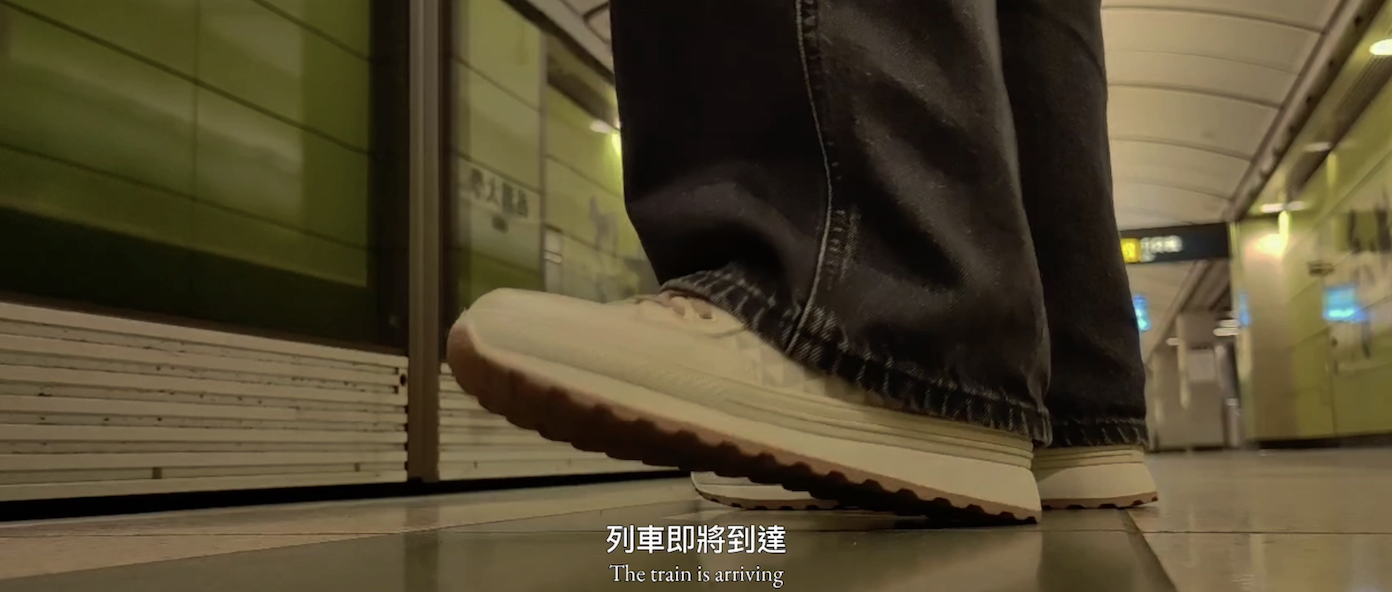
Figure 3. Ground-level shots showing anxiousness
The choice of background music and sound effect
A suitable choice of music often further strengthens the mood of the film. I selected an uplifting and slow-paced background musical piece called Oslo by Infraction to match the theme of “slow”. I cut the music into several portions and matched them to different sections of the film. The beginning of the film was more peaceful and tranquil, and as the film reach its climax, the music also became more epic. While film traveled through space and time to Hong Kong in the 1900s, I added the self-recorded sound effect of clock ticking to reinforce the idea of a “time travel”. With the film reaching its end, the rhythm also slowed and quietened down again.
The inclusion of MTR footage and sound
Although the main focus of the film is the tramcars, tracks, and stations. I still included some footage of MTR in the opening and ending scene to contrast the fast and slow speeds of the two transportation systems. Personally, I am more familiar with the MTR due to its convenience, but this also resulted in the tram being a relaxing and calming exit from the busy study life. To further emphasize such contrast, I also included the MTR broadcast sound throughout the film. As if the fast and slow modes of life in Hong Kong are parallel.
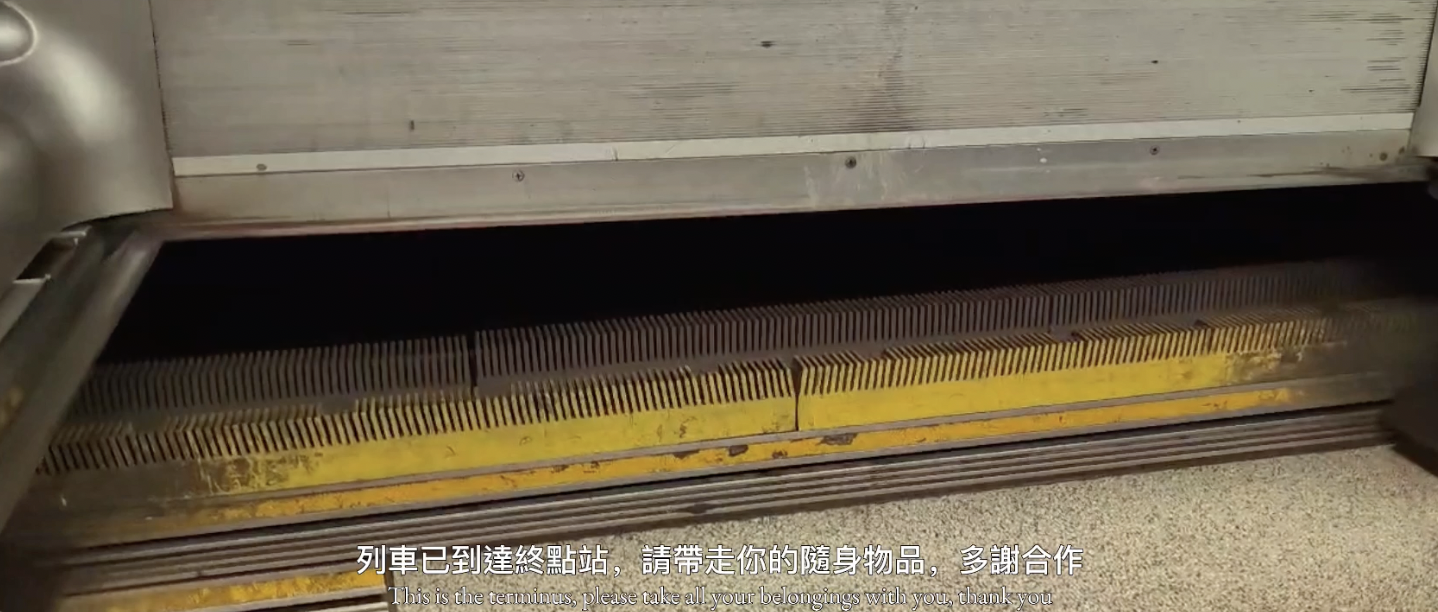
Figure 4. Footage of MTR in the ending scene
Headings, subtitles, and voiceover
To better convey the main massage, I divided the film into three chapters. The first chapter of “Boarding the Car” represents my experience of getting onto the tramcar for the first time. The second chapter of “On the Road” can be perceived as a retrospection of the tram’s road of development through history. The third chapter questions whether the tram has “Reached the stop”. From the subtitles and voiceover, the answer eventually rises to show that the tram is not reaching its final stop. I added subtitles in both English and Chinese to enhance the viewing experience. The voiceover was also intentionally spoken at a slow speed and emotionless tone to provoke deeper contemplation from viewers.

Figure 5. Chapter One “Boarding the Car”
Editing of historical footage
I wanted to create a strong visual effect to help viewers obtain an immersive journey through the course of history with the tramcars. Unfortunately, I do not have clips of trams in the past. As a result, I searched for historical footage of old Hong Kong online and cut out the sections that included tram cars. I re-edited the videos, so they appear to be more consistent in terms of coloration to better match the general mood of the film. The historical footage was shown in time order from the current to 1900. This echoed the title of the second chapter and the voiceover as a “journey to a slower timer”.
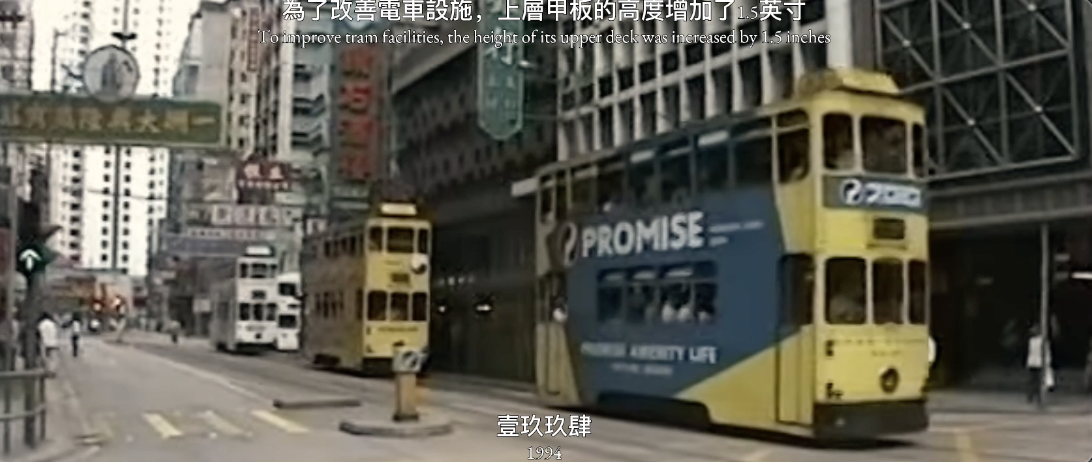
Figure 6. Trams in history
Reflection
The experience of completing this film production task completely changed my opinions toward Hong Kong trams. Before, I am puzzled by why the tram system remained in Hong Kong for so many years. After all the research and field experiences of taking the tram, I fully understood its unshakable importance to the city Hong Kong and its residents. I was also able to learn and explore different techniques in film production. I noticed how setting different camera angles can impose drastically defamiliarized or immersive feelings on the viewers. There are also areas for the film to improve. Some sections of the voiceover are lower in volume than others and the transition between footage is not always smooth. In the future, I will try to maintain a constant distance from the microphone when recording voiceovers and learn to utilize more advanced transition skills.
Sun Haofu (Audrey)
3035977410
Bibliography
Chan, Michael. (2009). Is revitalisation the key: Preserving of Hong Kong’s oldest transport facilities.
Chiu, Ping-Hui & Chow, Hiu Mei & Tseng, Chia-Huei & Spillmann, Lothar. (2011). The Hong Kong Peak Tram Illusion. i-Perception. 2. 295-295. 10.1068/ic295.
Choi, Minje & Kang, Gayoung & Kwak, Juhyeon & Jang, Yoonjung & Lee, Seungjae. (2022). Calculating the Environmental Benefits of Trams. Chemical Engineering Transactions. 97. 43-48. 10.3303/CET2297008.
Ding Ding (2023) Hong Kong Tramways. Available at: https://www.hktramways.com/en/ (Accessed: 14 May 2023).
Oxner, Matt & Chow, Hiu Mei & Zhong, C. & Spillmann, Lothar & Tseng, C.-H. (2012). Unraveling the Hong Kong Peak Tram Illusion. Journal of Vision. 12. 577-577. 10.1167/12.9.577.
Pu, Jiaozi & Liu, Zongxin. (2021). Evaluation of niche suitability of modern tram design based on Cloud-TOPSIS. Journal of Intelligent & Fuzzy Systems. 1-11. 10.3233/JIFS-219027.
Rydlewski, Mateusz & Tubis, Agnieszka & Skroumpelos, Georgios. (2023). Tram stop infrastructure in Poland in the aspect of safety. Archives of Transport. 65. 105-118. 10.5604/01.3001.0016.2480.
Woo, C.K. & Liu, Y. & Cao, K.H. & Zarnikau, Jay. (2020). Can Hong Kong price-manage its public transportation’s ridership?. Case Studies on Transport Policy. 8. 10.1016/j.cstp.2020.07.017.
Xu, Jing & Yan, Libo & Mak, Connie. (2018). Visitor experience of the Hong Kong trams as an unconventional attraction. International Journal of Tourism Research. 20. 10.1002/jtr.2209.
Zacharias, John & Meng, Sian & Qi, Qi. (2017). The contribution of the tramway to street vitality–the case of Hong Kong.
Zhu, Hui & Huang, Zhigang. (2010). Research on universal design of interior layout of the bus. 617 – 620. 10.1109/CAIDCD.2010.5681274.
I enjoyed watching your video, it has nicely shot sequences and transitions, I appreciated the stitching of stock footages that show the usage of trams at earlier eras. Your video took the tram and compared it with other modes of transport like the MTR, and argued how it is a slow and leisurely alternative to transportation. There is comprehensive research and documentation of tram spaces. Nice work!